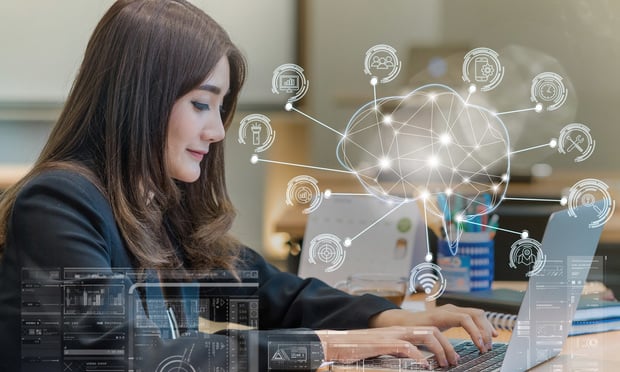Features

The Other Recent Infringement Lawsuit Judgment Over Ed Sheeran's 'Thinking Out Loud'
The lion's share of attention to copyright-infringement claims against Ed Sheeran over his 2016 Grammy-winning Song of the Year "Thinking Out Loud" recently focused on the trial in New York federal court. But in September 2022, a related infringement suit over the same songs' matching chord progression and harmonic rhythm was allowed to proceed.
Features

Current Landscape of NIL Contracts Under NCAA Policy
As we wait to see if Congress does indeed adopt a preemptive federal standard on NIL, the question becomes: What do business owners, interested investors and attorneys need to know prior to signing a college athlete to a NIL contract under the current landscape?
Features

IP Experts Discuss AI Art Copyright Litigation
IP experts weigh in on a case involving AI-created images based on an original work. The outcome of the case may have a significant impact on AI development and generative art.
Features

All Is Not Fair In Love and Warhol
A new balance must be struck between the new use and the exclusive right of authors to make derivative works, and part of that balance includes a clearer focus on the statutory fair use factors as well as the commercial nature or not of the new work. As a practical matter, how much the decision changes in this "troublesome" area remains to be seen.
Features

ITC General Exclusion Orders Targeting All Importers Are On the Rise
In recent years, the ITC has issued more General Exclusion Orders (GEOs) than in the past. For importers of products potentially implicated by a requested GEO, the GEO can be a major threat even if the importer is not a respondent in the case.
Features

Generative AI and Patent Considerations
A patent strategy informed by the unique considerations raised by generative AI will optimize protections for innovations in the field. Patent strategies should reflect the current legal landscape as well as anticipate potential future legal developments.
Features

IP Considerations for ITC General Exclusion Orders
In recent years, the ITC has issued more General Exclusion Orders (GEOs) than in the past. For IP owners facing infringing imported products from numerous elusive sources, a GEO can be a powerful remedy to tackle all infringing products at once.
Features

Securing License for Internet Artificial Intelligence
As AI increasingly interpenetrates internet transactions, licensing interest expands. The licensing of internet AI intellectual property is stymied because legal difficulties such as the proper assessment of the jurisdiction for the licensing agreement and the nature of the internet including the proper identification of the parties for the licensing agreement.
Features

Why Your Managed Service Provider Should Be Using Automated SIEM Logs to Manage Data Security Threats to Your Firm
To effectively safeguard their data and networks, law firms need to deploy advanced security tools that can help detect and respond to threats in real time. One such tool is security information and event management (SIEM) software.
Features

Securing License for Internet Artificial Intelligence
The licensing of internet AI intellectual property is stymied because legal difficulties such as the proper assessment of the jurisdiction for the licensing agreement and the proper identification of the parties for the licensing agreement. However, the primary issue is that normally the licensor is a computer program, hence not a legal person.
Need Help?
- Prefer an IP authenticated environment? Request a transition or call 800-756-8993.
- Need other assistance? email Customer Service or call 1-877-256-2472.
MOST POPULAR STORIES
- Use of Deferred Prosecution Agreements In White Collar InvestigationsThis article discusses the practical and policy reasons for the use of DPAs and NPAs in white-collar criminal investigations, and considers the NDAA's new reporting provision and its relationship with other efforts to enhance transparency in DOJ decision-making.Read More ›
- The DOJ's New Parameters for Evaluating Corporate Compliance ProgramsThe parameters set forth in the DOJ's memorandum have implications not only for the government's evaluation of compliance programs in the context of criminal charging decisions, but also for how defense counsel structure their conference-room advocacy seeking declinations or lesser sanctions in both criminal and civil investigations.Read More ›
- The DOJ's Corporate Enforcement Policy: One Year LaterThe DOJ's Criminal Division issued three declinations since the issuance of the revised CEP a year ago. Review of these cases gives insight into DOJ's implementation of the new policy in practice.Read More ›
- Don't Sleep On Prohibitions on the Assignability of LeasesAttorneys advising commercial tenants on commercial lease documents should not sleep on prohibitions or other limitations on their client's rights to assign or transfer their interests in the leasehold estate. Assignment and transfer provisions are just as important as the base rent or any default clauses, especially in the era where tenants are searching for increased flexibility to maneuver in the hybrid working environment where the future of in-person use of real estate remains unclear.Read More ›
- Developments in Distressed LendingRecently, in two separate cases, secured lenders have received, as part of their adequate protection package, the right to obtain principal paydowns during a bankruptcy case.Read More ›
